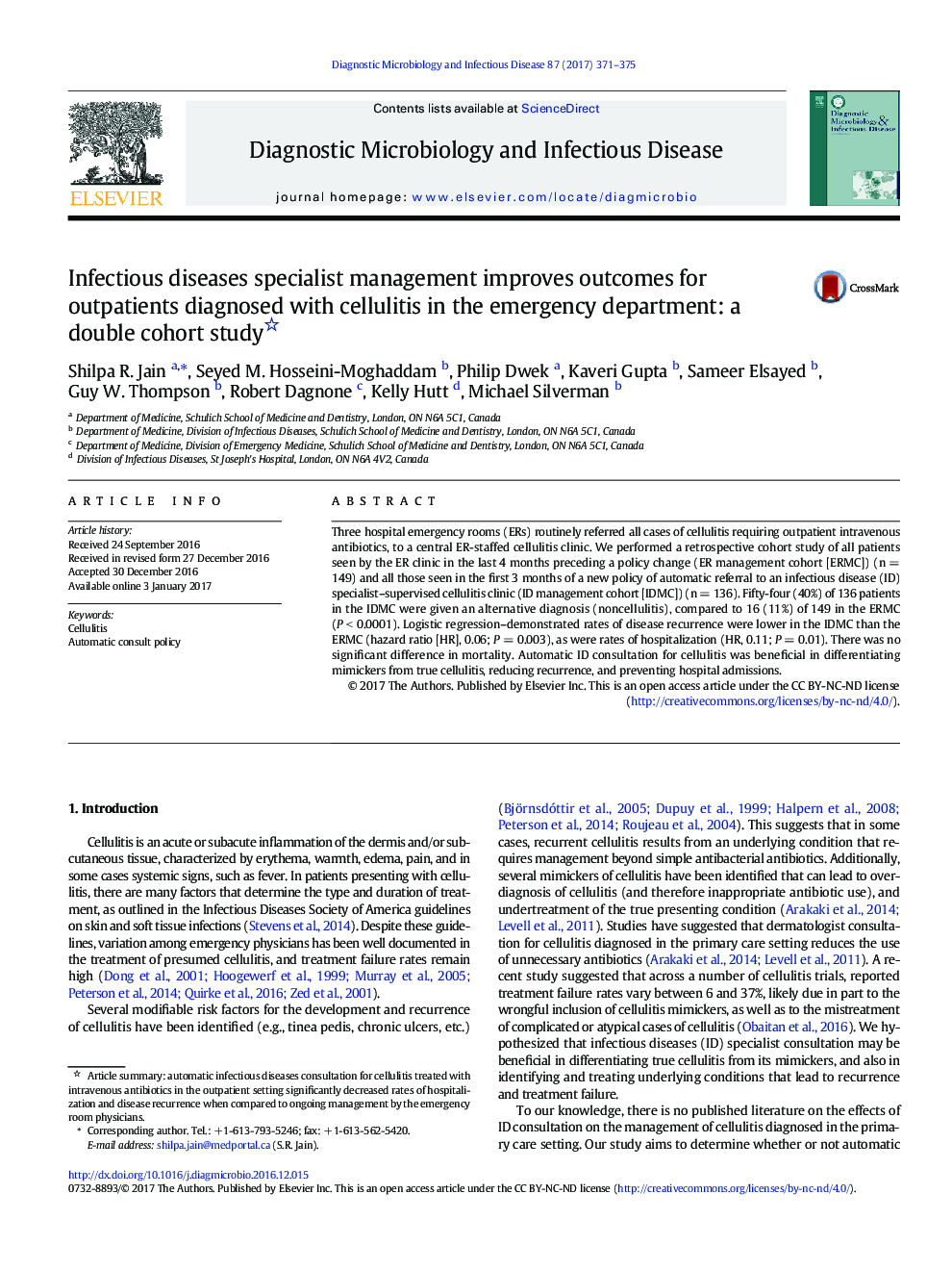| Article ID | Journal | Published Year | Pages | File Type |
|---|---|---|---|---|
| 5665835 | Diagnostic Microbiology and Infectious Disease | 2017 | 5 Pages |
â¢Automatic ID consultation for cellulitis diagnosed in the emergency room was implemented.â¢ID consultation reduced hospitalization and disease recurrence.â¢ID consultation led to earlier narrowing of the antibiotic spectrum.â¢ID consultation identified cellulitis mimickers allowing for care of the true issue.â¢ID consultation led to identification and treatment of predisposing conditions.
Three hospital emergency rooms (ERs) routinely referred all cases of cellulitis requiring outpatient intravenous antibiotics, to a central ER-staffed cellulitis clinic. We performed a retrospective cohort study of all patients seen by the ER clinic in the last 4 months preceding a policy change (ER management cohort [ERMC]) (n = 149) and all those seen in the first 3 months of a new policy of automatic referral to an infectious disease (ID) specialist-supervised cellulitis clinic (ID management cohort [IDMC]) (n = 136). Fifty-four (40%) of 136 patients in the IDMC were given an alternative diagnosis (noncellulitis), compared to 16 (11%) of 149 in the ERMC (P < 0.0001). Logistic regression-demonstrated rates of disease recurrence were lower in the IDMC than the ERMC (hazard ratio [HR], 0.06; P = 0.003), as were rates of hospitalization (HR, 0.11; P = 0.01). There was no significant difference in mortality. Automatic ID consultation for cellulitis was beneficial in differentiating mimickers from true cellulitis, reducing recurrence, and preventing hospital admissions.
